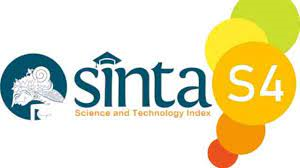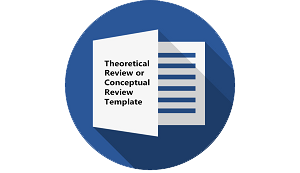Assessing the Academic Key Performance Indicators of Junior College Students in Writing at Albaha University
DOI:
https://doi.org/10.30957/ijoltl.v6i1.657Keywords:
Blackboard, indicators, performance, Thorndike Approach, writingAbstract
The current paper has focused on evaluating Saudi junior students’ writing performance at Albaha University. In this direction, the study aims to assess the academic key performance indicators of Saudi male students who study Writing (1) course in the first term of (2019) in the College of Science and Arts in Almandaq. About 24 students participated in this study. They were divided into two groups: a control group (n=12) and an experimental group (n=12). A pretest and posttest were carried out to collect the necessary data for both groups. To analyze the data, the study used percentages and the comparison of key performance indicators based on the Thorndike Approach for evaluating students' results and the natural distribution for their grades. Results revealed that while 24% of the control group participants failed to pass the posttest, all the experimental group respondents passed in the posttest after implementing the course through Blackboard. These results showed a statistically significant difference between the control group and the experimental group in favor of the experimental group. In light of these findings, the academic key performance indicated that the students' writing skills improved after implementing the treatment through the Blackboard Portal which helps in enhancing students’ writing skills and achieving the students’ learning outcomes in the College of Science and Arts in Almandaq and other Colleges at Albaha University.
Downloads
References
Ajiba, I and Zerhouni, B (2019). Student Engagement for Quality Enhancement and Responding to Student Needs in the Moroccan University: The Case of the English Studies Track. Arab World English Journal (AWEJ), 10(3). DOI: https://dx.doi.org/10.24093/awej/vol10no3.11
Al-Khasawneh, F. M. (2014). Error Analysis of Written English Paragraphs by Jordanian Undergraduate Students: A Case Study. International Journal of English Language, Literature and Humanities, 2.
Alqahtani, M, and Elumalai, K. (2020). Analysis of Lexical and Cohesive Ties usage in Undergraduate Students’ Writing by Applying Task-Based Language Learning Methodology. Arab World English Journal (AWEJ), Pp.79 -90 DOI: https://dx.doi.org/10.24093/awej/vol11no1.7
Altamimi, D., and Ab Rashid, R. (2019). Spelling Problems and Causes among Saudi English Language Undergraduates. Arab World English Journal (AWEJ), 10(3), 178- 191. DOI: https://dx.doi.org/10.24093/awej/vol10no3.12.
Al-Zahrani, S. A. (2018). Problems of English Paragraph Structure in the Writing of Female Students at Albaha University, MA Thesis, College of Arts, Albaha University.
Ayçiçek, B., & Yanpar, Yelken, T. (2018). The Effect of the Flipped Classroom Model on Students’ Classroom Engagement in Teaching English. International Journal of Instruction, 11(2), 385-398. https://doi.org/10.12973/iji.2018.11226a
Biggs, J. (2014). Constructive alignment in university teaching. HERDSA Review of Higher Education, 1, 5- 22.
Brown, H. D. (2000). Principles of language learning and teaching. London: Prentice-Hall Regents.
Brooke H. (2000). "The Components of Written Response: A Practical Synthesis of Current Views." Rhetoric Review 2 (January 1985): 136−56. Rpt. in C Corbett, Edward P. J., Nancy Myers, and Gary Tate. The Writing Teacher's Sourcebook. 4th ed. New York: Oxford University.
Chatta, B. S., &Haque, M. I. (2020). Improving Paragraph Writing Skills of Saudi EFL University Students Using Flipped Classroom Instruction. Arab World English Journal (AWEJ) Special Issue on CALL (6). 228- 247. DOI: https://dx.doi.org/10.24093/awej/ call6.15
Elhussien, F. (2019). Creative Writing from Theory to Practice: Multi-Tasks for Developing Majmaah University Students' Creative Writing Competence, Arab World English Journal (AWEJ), DOI: https://dx.doi.org/10.24093/awej/vol10no3.16.English language Course Specification, English Department, College of Arts, Albaha University, 1438 H).
Hughes. A. 2003. Testing for Language teachers. 2nd edition. Cambridge: Cambridge University Press.
Marcey, D. J., &Brint, M. E. (2012). Transforming an Undergraduate Introductory BiologyCourse through Cinematic Lectures and Inverted Classes: A Preliminary Assessment of the CLIC Model of the Flipped Classroom. 1-9.Retrieved from http://www.nabt.org/websites/institution/File/docs/Four 20Year%20Section/2012%20 .
McLaughlin, J. E. et al., (2014). The Flipped Classroom: A Course Redesign to Foster Learning and Engagement in a Health Professions School. Academic Medicine, 89(2), 236-243.DOI: 10.1097/ACM.0000000000000086.
Nouri, Z. and Rasouli, R. (2020).The Effect of Task Type on the Writing Accuracy of Iranian Male and Female EFL Learners. Linguistics Journal, 14 (1). ISSN: 1718-2301.
Nunan, D. (1989). Understanding the Language Classroom. U.K: Prentice-Hall.
Nunan, D. (1992). Research Methods in Language Learning. Cambridge: CUPThe Quality Assurance Agency for Higher Education. (2017). Enhancement-led Institutional Review Handbook. Fourth Edition. QAA Scotland.
Qader, R. and Arslan, F. (2019). The Effect of Flipped Classroom Instruction in Writing: A case Study with Iraqi EFL Learners. Teaching English with Technology, 19(1), 36-55.
Rass, R. (2015). Challenges Face Arab Students in Writing Well-Developed Paragraphs in English. English Language Teaching, 8(10).
Yu, Z. and Wang, G. (2016). Academic Achievements and Satisfaction of the Clicker-Aided Flipped Business English Writing Class. Educational Technology & Society, 19(2), 298–312.
Zakaria, A. and Mugaddam, A. (2013). An Assessment of the Written Performance of the Sudanese EFL University Learners: A Communicative Approach to Writing. World Journal of English Language volume, 3(4) DOI: 10.5430/wjel.v3n4p1.
Downloads
Published
How to Cite
Issue
Section
License
Authors who publish with this journal agree to the following terms:
- Authors retain copyright and grant the journal right of first publication with the work simultaneously licensed under a Creative Commons Attribution-ShareAlike 4.0 International License that allows others to share the work with an acknowledgement of the work's authorship and initial publication in this journal.
- Authors are able to enter into separate, additional contractual arrangements for the non-exclusive distribution of the journal's published version of the work (e.g., post it to an institutional repository or publish it in a book), with an acknowledgement of its initial publication in this journal.
- Authors are permitted and encouraged to post their work online (e.g., in institutional repositories or on their website) prior to and during the submission process, as it can lead to productive exchanges, as well as earlier and greater citation of published work (See The Effect of Open Access).












